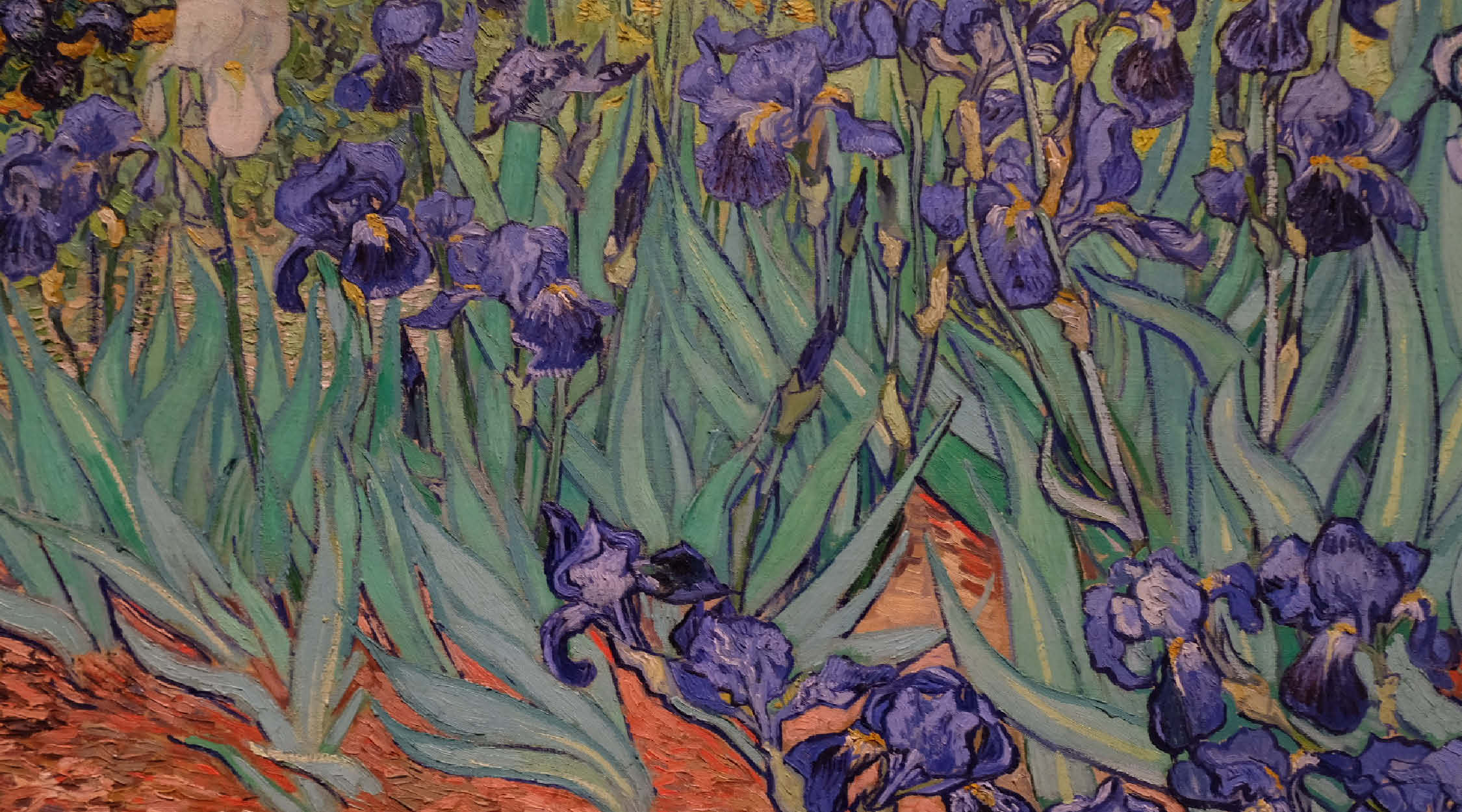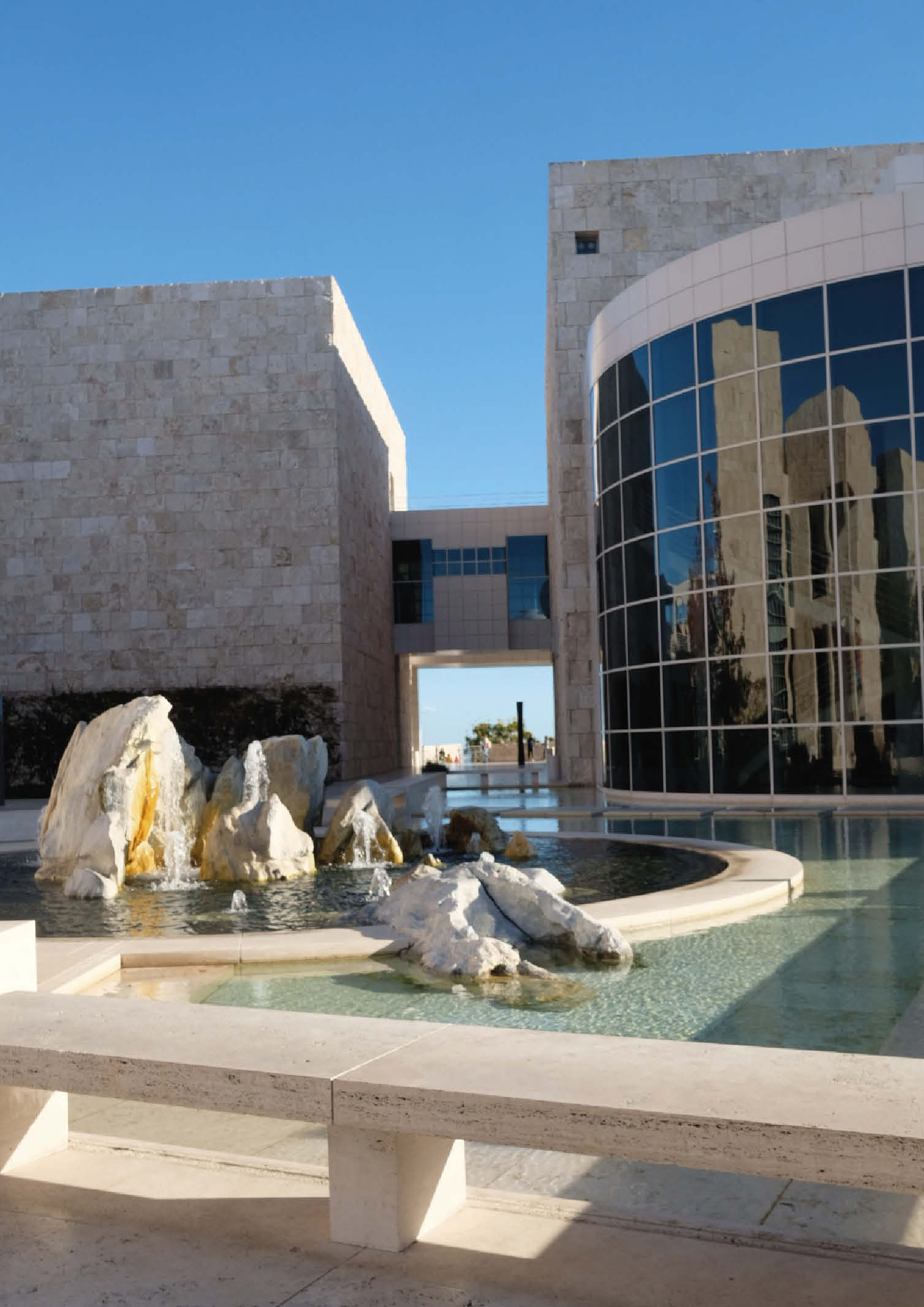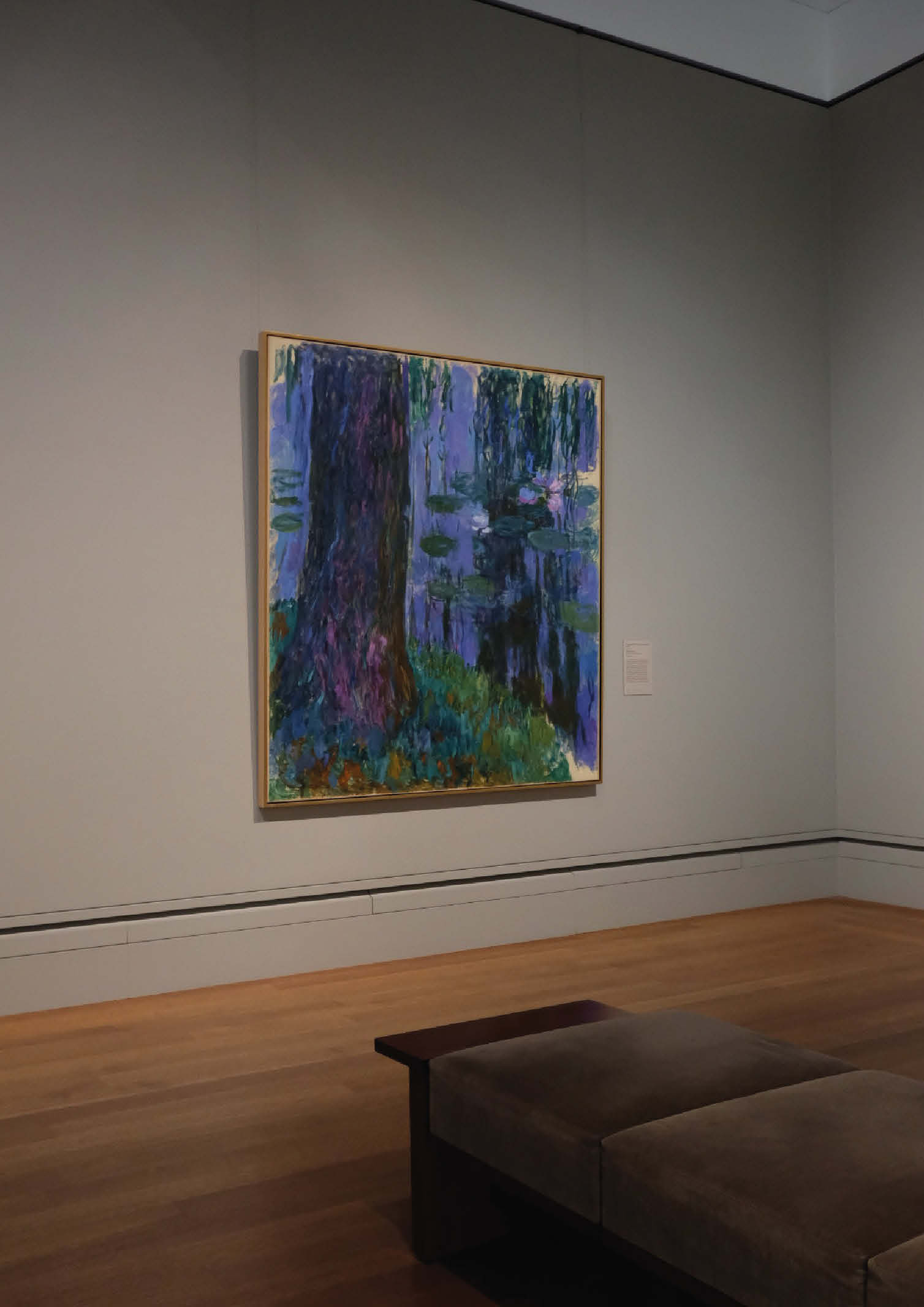
The Getty Center: Home to Iconic Works of Art
Built just off the San Diego Freeway in the foothills of the Santa Monica Mountains, the site can be accessed by a cable-pulled funicular that rises 900 feet up the hillside. Views from the Center are incredibly impressive, showing the disparate aspects of the Los Angeles landscape – the Pacific Ocean, the San Gabriel Mountains, and the vast grid of the city.
The campus was designed by the American architect Richard Meier, while its iconic central garden was built by artist Robert Irwin.
Along with the J. Paul Getty Museum, the campus comprises six other facilities including an art research institute with a million-volume library, the headquarters of the Getty Foundation, and a conservation center. The J. Paul Getty Museum consists of six interconnected pavilions encircling a central courtyard and separated by loggias, gardens, and pools. Everywhere, there are subtly calculated and often unexpected viewing points that turn one’s attention to the city and the ocean.
The permanent collection on view at the Getty Center displays vast collections of paintings, sculptures, drawings, photographs, manuscripts, and works of decorative arts.

The galleries present works dating from the Middle Ages to the 19th century including masterpieces by Claude Monet, Vincent Van Gogh, Carpaccio, Andrea Mantegna, Francisco Goya, Rembrandt, El Greco, Paul Cézanne, Auguste Rodin, Édouard Manet, Henri de Toulouse-Lautrec, and Edgar Degas, to name just a few. The sculpture and decorative arts galleries mostly feature 17th – 18th century French and Italian works.
The drawings collection includes pieces by Leonardo da Vinci, Michelangelo, Rembrandt, Van Gogh, and Seurat, among others.
The Getty’s photographic collection is considered one of the most important in the world, with pieces dating from the mid-19th century to the present, including works by Ansel Adams, Diane Arbus, Henri Cartier-Bresson, Man Ray, and Rober Capa, among others. Finally, the museum holds an exceptional collection of European manuscripts and illuminated books.
The Center can serve as an oasis for the mind and body, a valuable addition to the public realm in an increasingly busy and fragmented city. From the hilltop terraces and gardens, one can see and understand the physical form of Los Angeles more clearly.
The architecture frames small vignettes and expansive panoramas, and it intensifies one’s perception of changing light and color throughout the day. It gives visitors a heightened awareness of nature and the city: the hills and distant mountains, the Pacific Ocean, and, on a clear day, the island of Catalina. A place apart, yet firmly connected to the world beyond, the Center is visible, accessible, and open to all.
About the contributor
Kim Cruz is a self-taught fine artist and curator from Manila, Philippines. With a background in Art Business and Fine Arts, Kim pursued her love for art after her stint as a TV host. Kim enjoys traveling the world and visiting different museums in between exhibitions to learn more about art and culture.








